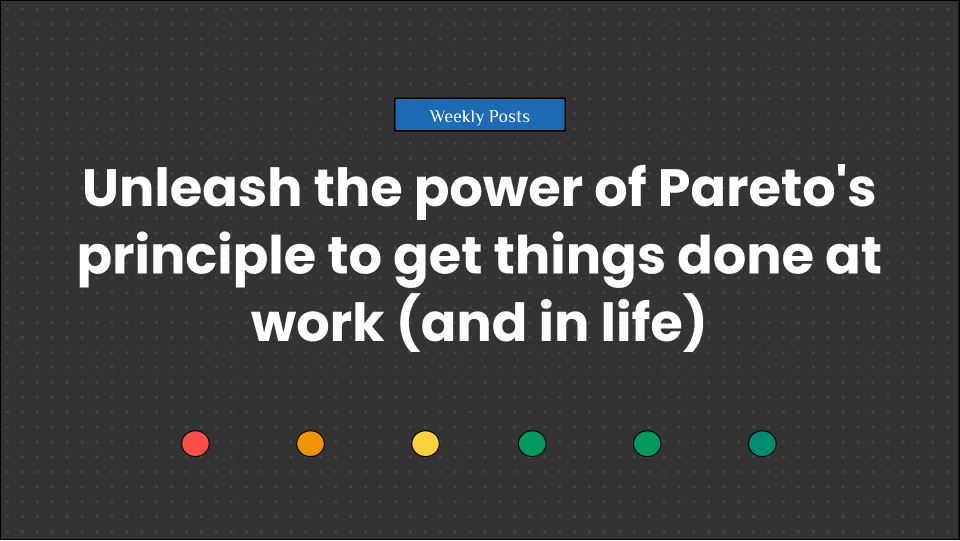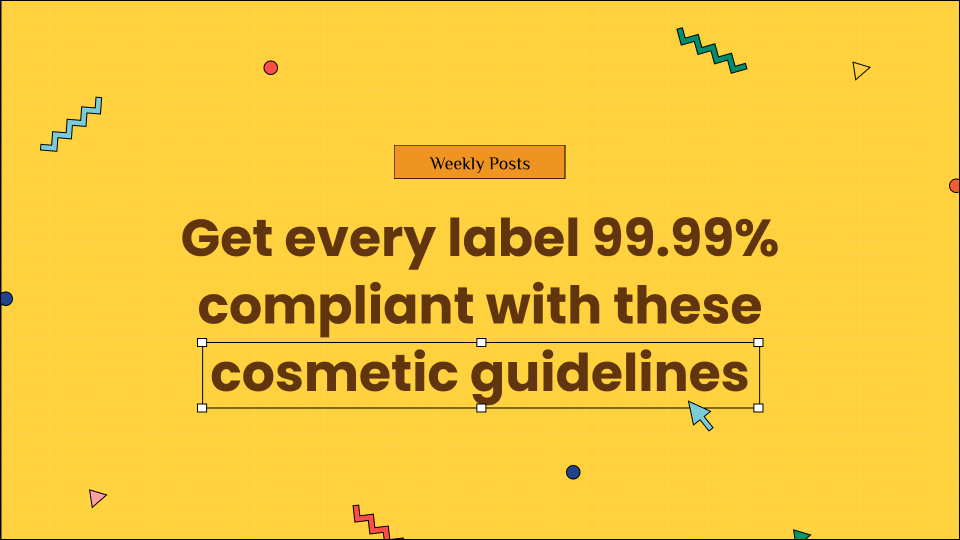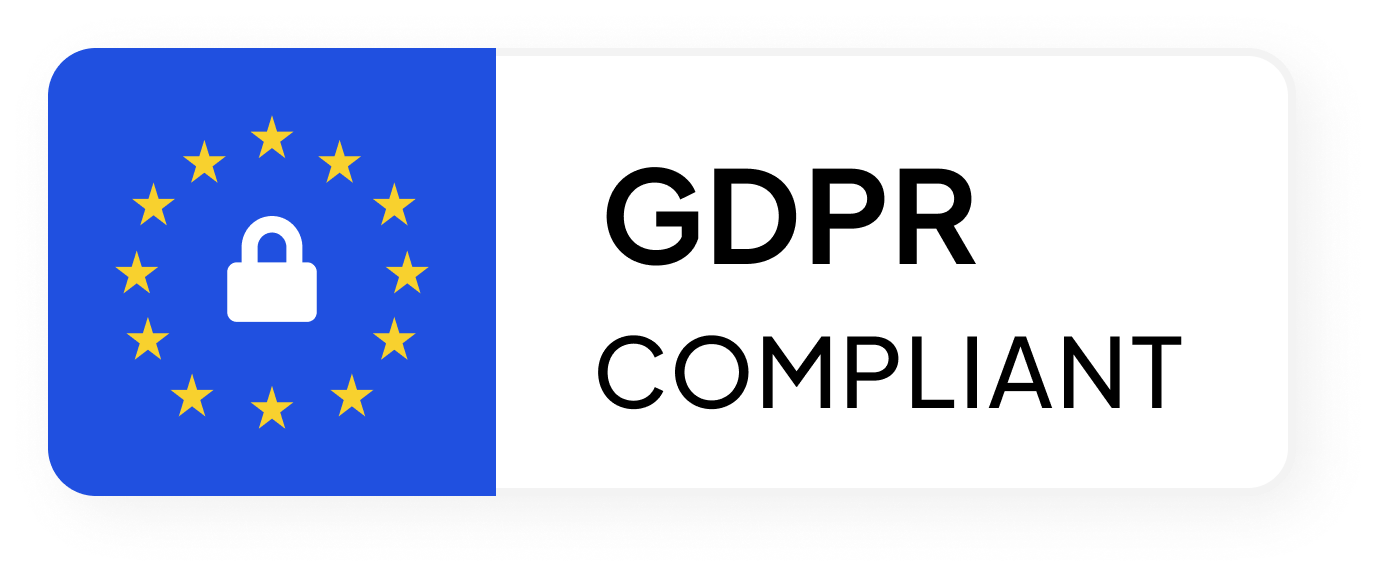Are you tired of spending your life being pulled in a hundred directions? You, too, can achieve success at work and in life – Pareto’s principle is the secret to getting things done.
Also known as the 80/20 rule, it can simplify your life when you have an overwhelming number of tasks.
Pareto’s principle helps people cut through the noise by identifying tasks topping at 20% of the total. You need to follow a step-by-step process to determine which items are truly important and which don’t deserve the most of your time or attention.
The idea of Pareto’s principle is that you should focus on a few things to get much of your work done and use the least resources.
It is a method of breaking down a concept or task into its “vital few” and most important elements, where you focus on getting to the 20% of your work that accounts for most of your results.
This article will highlight how to use this strategy effectively to succeed in work and life.
Let’s get things on track!
Table of Contents
What is Pareto’s principle?
The principle is a fundamental law of economics that states that for every two items, there is at least one that accounts for 80% of the total. It is a common approach for maximizing productivity. Be it your work or personal life, the 80/20 principle helps you maximize output.

By using Pareto’s principle, you can get things done more efficiently and effectively. This rule of thumb can help you identify the most important part of your work.
The downside to the 80/20 rule is that if team members narrow their focus to only the important tasks, they might neglect other tasks like correspondence and email. Finding the right balance between using the 80/20 rule, and getting through all of your tasks, can be tough.
However, you can use timeboxing and other helpful tools coupled with self-discipline to help you find this balance.
How to use Pareto’s principle?
80% of your happiness depends upon 20% of your time!
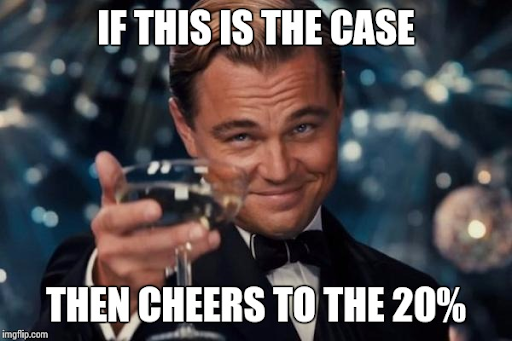
Understanding the Pareto principle definition, you can identify the tasks and resources most valuable to you and use them to achieve your goals.
You can apply this principle to work and your everyday life. Pareto principle examples show that if you want to get something done at work, you must focus on ensuring that you’re working on the most important tasks.
If you focus on 20% of the most important tasks, then 80% of your progress will be derived from thoseTo improve your overall social life, yousks.
You can also apply the same principle to your personal life. You must focus nships that define and impact you to improve your overall social life.
The key is to apply Pareto’s Principle thoughtfully.
You don’t want just blindly to follow it; you want to use it as a tool to help you achieve your goals.
Here’s how you can make the best use of this rule.
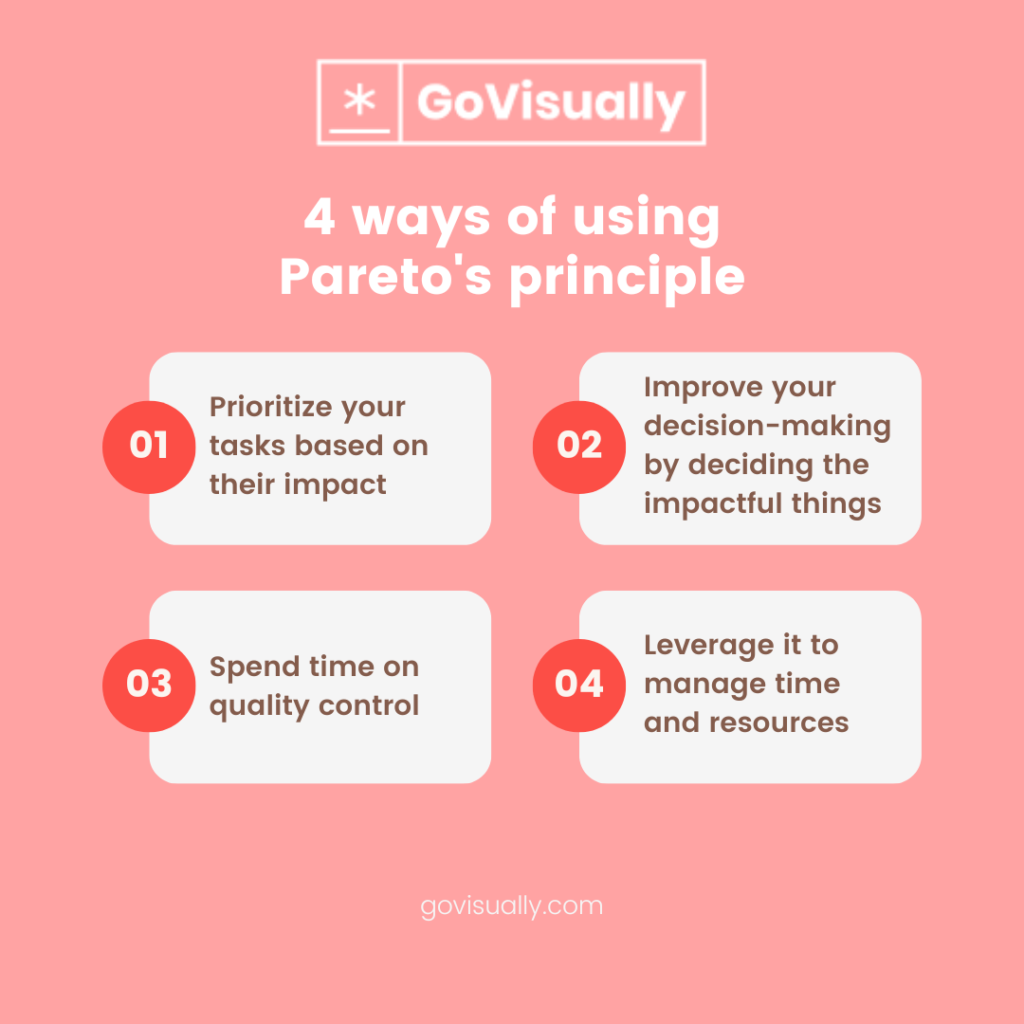
1. Prioritize your tasks based on their impact
20% of people sleep 80% of alarms. Sound familiar?
You can use the Pareto principle to get more done at work and in life. The 80/20 rule helps you prioritize the tasks you need to accomplish during your day.
The 80/20 rule states that 80% of your outcomes derive from 20% of your input, which means prioritizing tasks in order will use most of your time to complete the most important ones.
To get the most done, identify which tasks impact your productivity the most and focus on those. 20% of tasks will result in 80% of your output.
One of the things that help me is listing down the tasks for the day and ranking them by impact.
Prioritize tasks based on impact by asking yourself if any of what you need to do for the day involves collaborating with others on a project. Once you have ranked your tasks, do the highest impact ones first to allow projects to continue progressing.
2. Improve your decision-making by deciding the impactful things
Pareto’s principle helps you prioritize solutions when you have a problem with many causes. It improves the decision-making process by helping you identify these problems.
Start by grouping your problems into categories. If most of these problems fall into one category, they might have one solution. Doing so will help you resolve multiple issues at a time. Order the problems by assigning them a value based on their impact on your business. You can do this with a number between one and ten or with a monetary value.
Focus on the top 20% of problems that impact your work the most. Then, develop a plan to target one solution that can get you 80% of the results.
Imagine an ecommerce company employing you as the Customer Service in-charge. You review the most recent complaints and find out that most refund requests are related to receiving damaged products.
In this case, your company needs to prioritize this problem and find a solution to avoid processing refunds. New packaging can help protect products during shipping and prevent them from being damaged during transit. And just by identifying a single problem, you have saved a lot of lost orders.
That’s the power of making the right decisions about the things that create the most impact.
3. Spend time on quality control
The Six Sigma quality control Methodology, uses a Pareto chart and Pareto analysis. Six Sigma is a methodology that attempts to eliminate variations to increase production. Pareto charts can help visualize data and identify what action to prioritize.
How do Pareto charts help?
Pareto charts allow you to visualize different items or processes involved in a particular project. If you want to improve your efficiency, you should focus on changing the parts of our process that cause the most problems.
One way to use Pareto’s law is to create a Pareto chart showing how many different tasks are involved in a project. This will help you identify which tasks take the most time and which can be eliminated without significantly impacting the project timeline.
Once you’ve identified the bottlenecks, you can start implementing changes to reduce their impact. For example, you might reduce the number of steps needed for a task or move it to a more efficient time slot.
4. Leverage it to manage the productivity of time and resources
You can use this principle to manage your time and work efficiently.
Try to complete 20% of your tasks quickly and easily. This will help you get more done in a shorter amount of time.
The 80-20 rule is based on the idea that most tasks are relatively easy and can be completed by 20% of the workforce. Tasks that are more difficult or require more effort tend to account for only a small percentage of outputs. Applying the 80-20 Rule lets you focus your limited resources on the most important tasks. This helps you achieve your goals faster and with less stress.
If you want to improve your time management skills, apply the 80-20 Rule to your daily routine.
How does the Pareto principle apply to work?
The Pareto principle is a popular rule in work life that states that 80% of results come from 20% of the effort. This means that most success in work comes from working on only a few key tasks.
You can use the Pareto principle to help you decide which tasks to pursue. By understanding which tasks contribute the most value to your organization, you can focus your efforts on those tasks.
You can also use this principle to optimize your work schedule. Knowing which tasks take the least time, you can minimize your time working on unimportant tasks.
By using the Pareto principle in work life, you can achieve more success and efficiency in your work life.
How does the Pareto principle apply to personal life?
The Pareto principle is a basic rule of economics that you can also apply to your personal life.
For example, if you want to lose weight, you might try to eat fewer calories than you burn. If you want to improve your grades, you might study for only a few hours each week instead of studying for the entire semester.
If you want to achieve something, the Pareto principle says that it’s likely that only a small number of actions are required to achieve to do so. It can help you determine which actions will likely result in the most success.
Benefits of using the Pareto principle
The Pareto Principle allows you to focus your priorities and work more efficiently. This can create maximum impact with fewer hours of work.
Using the 80/20 rule can improve your metrics by prioritizing initiatives correctly.
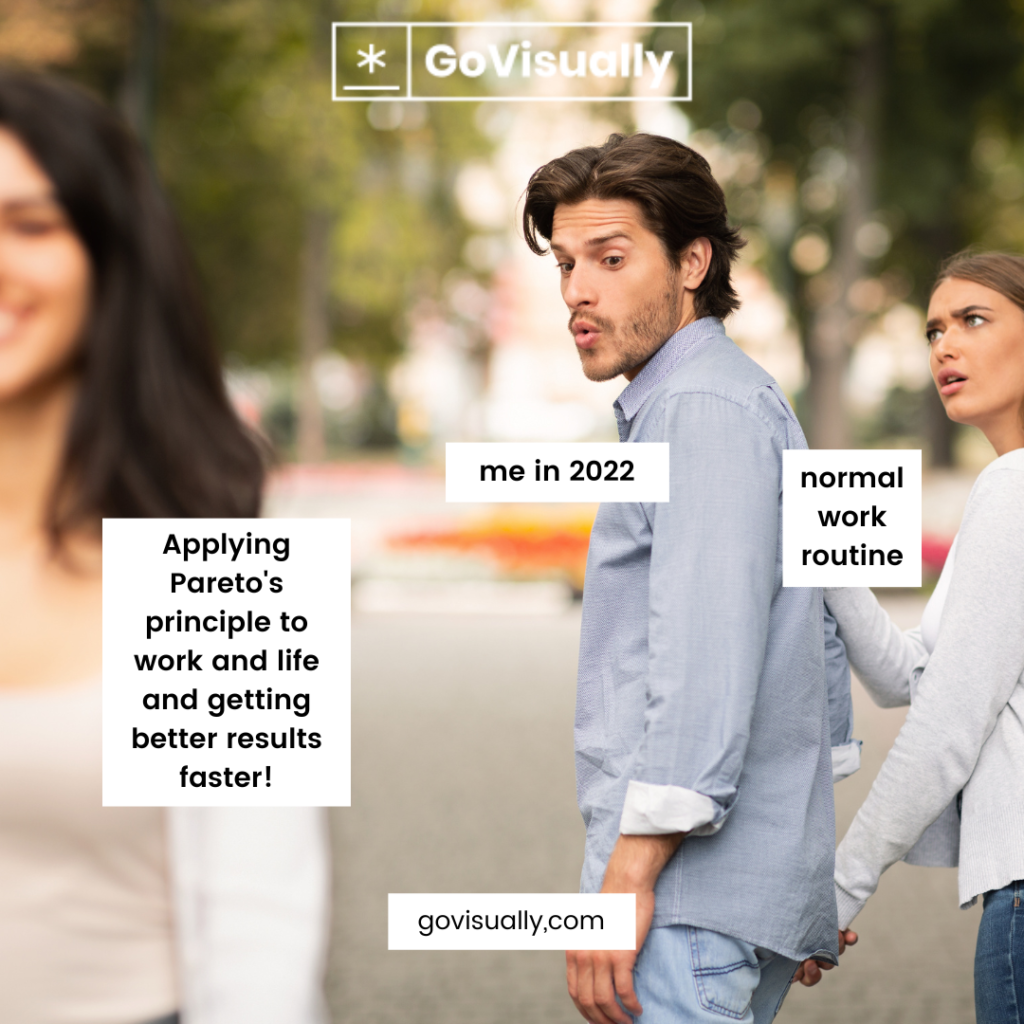
When we focus our efforts on what matters, it is more effective and less overwhelming. Following are the benefits of using the Pareto Principle:
- Bigger tasks are broken down into smaller manageable tasks
- Focused strategy
- Priorities mapped out for you and your team
- Boost daily productivity
Improve team collaboration with GoVisually
Like most people, you’d love to work from home but often struggle to get the same level of collaboration in the office. One reason is that traditional office communication tools don’t work well when people are working remotely.
But you can get the leading online proofing software to solve 80% of your feedback and approval problems.
Presenting GoVisually!
GoVisually allows teams to collaborate on projects and provide feedback in real time. With its integrations with Adobe CC and 1000+ other apps, you can manage your time to cut down on menial tasks. Or spending hours in the approval process. This can be streamlined with just one software, triggering the 80% results.
Want to send big files?

Need a quick way to share large files and creative assets?
With GoVisually Share, it’s absolutely free! Try today.
Key takeaway
And before we leave you to make some serious changes to how you see work (and life) problems, remember that Pareto Principle is not referring to the effort you put in but the results and objectives you’re working on.
You still need to give 100% to achieve 80% of your desired results.
It’s about identifying the right things to create major impacts and working in that direction.
So instead of spending hours on manual labor, leverage Pareto’s principle in curating processes and see how it can help you streamline your workflow and progress towards your goal.
